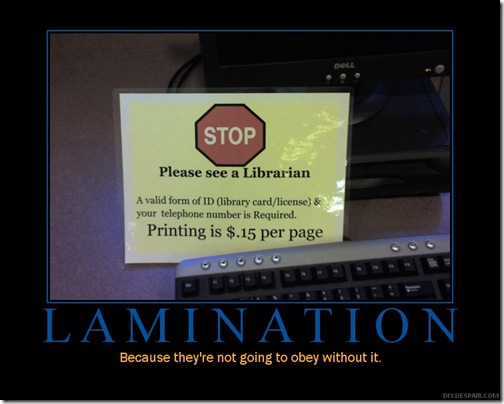Now there's an idea
For a few years now I've been on the record as believing that before we completely ditch Dewey or another standard library organizational scheme maybe we should try something a little more simple. For example, just putting up better signage in the library. And, now I've got a patron who, knowingly or not, is on my side. VCU Libraries Library Suggestion Blog recently posted the following suggestion:
For students browsing for books, I suggest the library put up book categories/subject titles on the ends of each bookcase, below the call numbers. This can make it significantly easier to find where we are when looking for books in the library -- after all, we process words much faster than alphanumeric call numbers. Thank you!
From: an undergraduate student
Since it's so short I'll repost the complete response here:
Patricia Selinger, Head, Preservation Department, VCU Libraries, responds...
Thank you for this great suggestion! The Preservation Department is responsible for maintaining the call number guides throughout the stacks. With our stacks overcrowded, we shift collections regularly to make room for new materials. The call number guides become obsolete quickly in this environment. We haven't had subject guides before but we are looking at solutions that will help students browse by subject. Look for posters in the near future.
In other words, here's a patron who thinks that just putting a bunch of numbers at the end of an aisle isn't very useful and instead suggests that we use actual words instead, or at least in addition to the numbers. Hey, I bet if you did that, your collection would be instantly more "browseable" without moving, recataloging, and relabeling everything.
But, I still have a question: Admitting that this is based on an assumption on my part but why the heck is the "preservation department" in charge of signage. My assumption is that this department doesn't exactly interact with the library's users with any regularity. Shouldn't those in charge of the signage actually know how the collection is being used via direct observation? Besides, what does directional signage have to do with preservation of the collection anyway? (Maybe you can preserve the collection by making sure no one can find what they're looking for. No use = long-term preservation? ;-)




